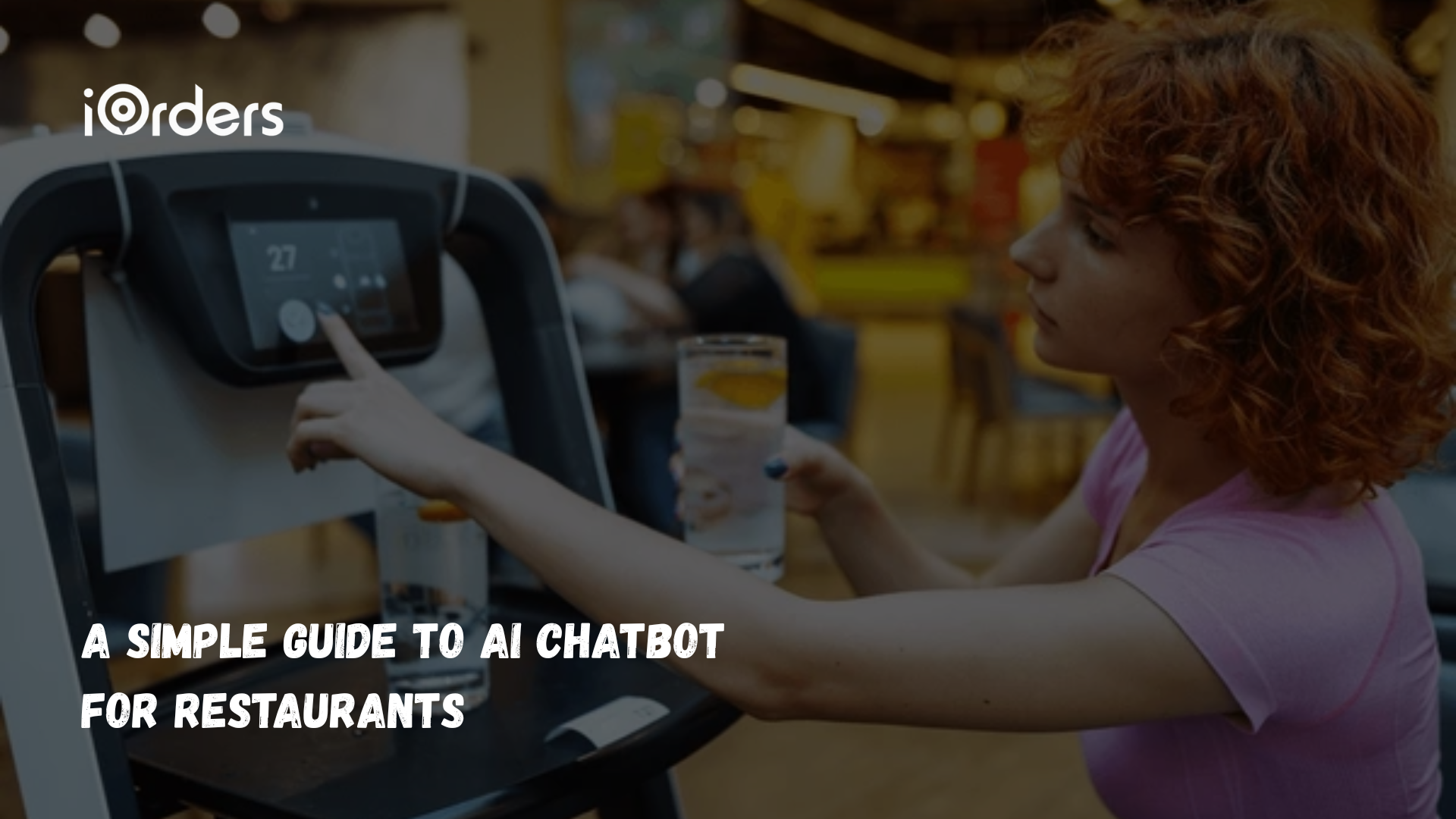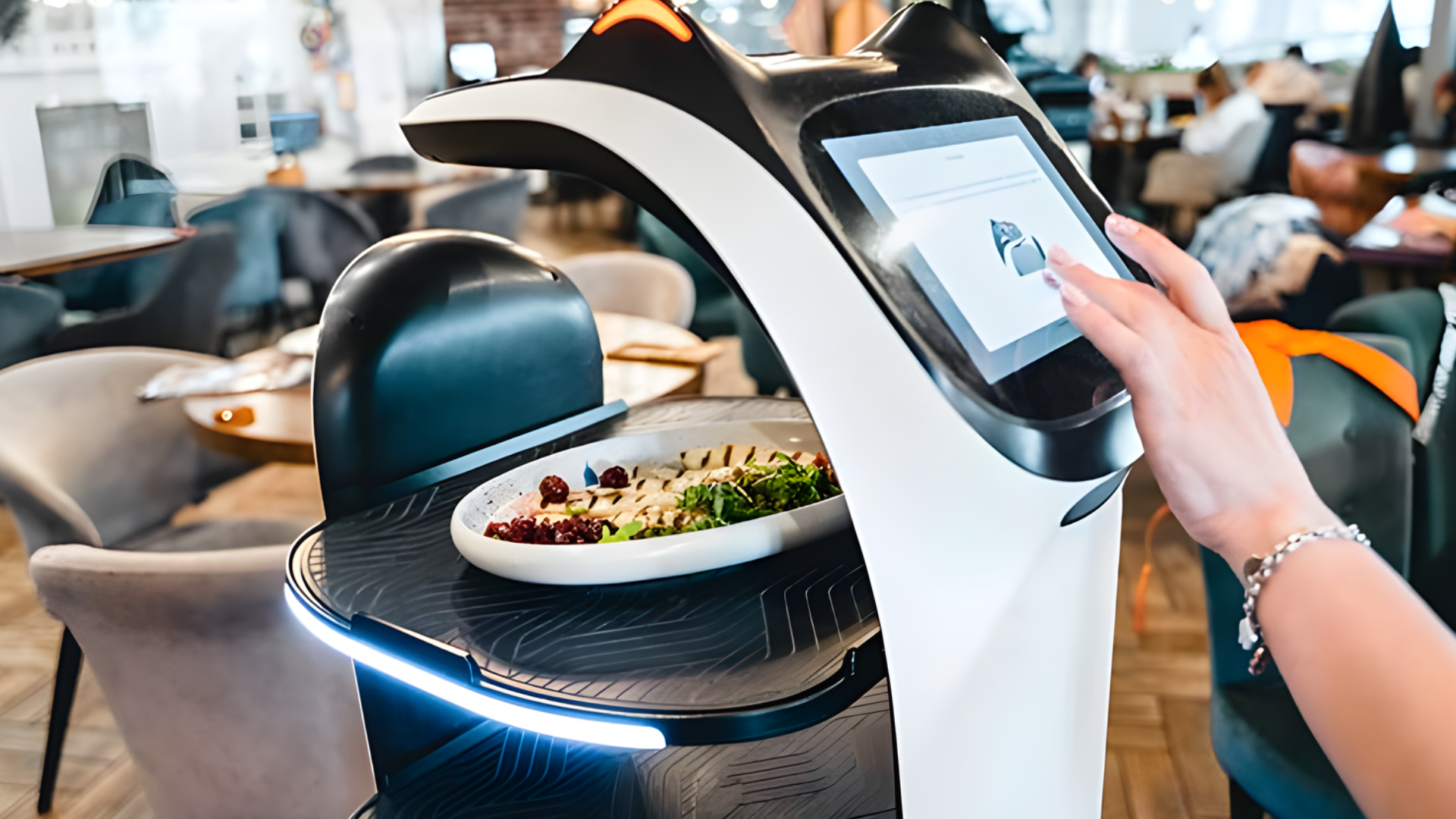November 19, 2025

Imagine a busy Friday evening at a popular restaurant. The front desk is swamped with calls, staff scramble to note orders accurately, and customers wait impatiently for confirmation. Some orders get misheard, reservation slots are double-booked, and online inquiries go unanswered, creating frustration and lost revenue.
Now picture the same scenario with an AI chatbot in place. Customers instantly book tables, place pickup or delivery orders, ask about menu items, and get personalized recommendations. The chatbot handles repetitive queries, routes complex requests to staff, and updates inventory automatically. Staff focus on cooking and serving, while customers enjoy a smooth, responsive experience.
This guide explores how AI chatbots are revolutionizing restaurant operations in 2025, from improving customer service and order accuracy to boosting efficiency, loyalty, and revenue.
At a Glance:

AI chatbots for restaurants are intelligent software programs designed to interact with customers, answer queries, take orders, and assist with various operational tasks. It can do all this through conversational interfaces like websites, apps, messaging platforms, or social media.
Unlike traditional automated systems, AI chatbots use natural language processing (NLP) and machine learning to understand customer intent, respond contextually, and continuously improve their interactions over time.
Key Features of AI Chatbots for Restaurants:
AI chatbots are more than just a convenience. They are a strategic tool that enhances efficiency, improves customer satisfaction, and drives revenue for restaurants of all sizes.
Also Read: Top Food Trends for 2025 You Need to Know

AI chatbots operate through a combination of natural language processing (NLP), machine learning, and integrations with restaurant systems to automate customer interactions and streamline operations.
Here’s a clear breakdown of how they function in a restaurant setting:
The first step is interpreting what the customer wants, whether it’s placing an order, booking a table, or asking about menu items.
How this works:
Outcome: Customers get accurate and context-aware responses instantly, reducing back-and-forth and enhancing engagement.
Once the chatbot understands an order, it collects all details and prepares it for the restaurant system.
How this works:
Outcome: Orders are error-free, instantly visible to kitchen staff, and ready for faster fulfillment.
The chatbot enhances customer experience by offering suggestions, upsells, or promotions tailored to individual preferences.
How this works:
Outcome: Customers feel valued, engagement and average order value increase, and promotions are more effective.
The chatbot communicates with reservation systems, POS, inventory, and loyalty programs to keep operations seamless.
How this works:
Outcome: Operational efficiency improves, errors are reduced, and staff workload is minimized.
AI chatbots learn from interactions over time to continually improve their accuracy and performance.
How this works:
Outcome: The chatbot becomes smarter, faster, and more effective at driving engagement, satisfaction, and revenue growth.
By combining automation, intelligence, and integration, AI chatbots streamline ordering, enhance customer interaction, and free restaurant staff to focus on in-person service and kitchen efficiency.
Also Read: Best Restaurant Reservation Apps and Systems for 2025
AI chatbots are transforming how restaurants handle orders, customer queries, and engagement. While they bring significant advantages, they also have some limitations that operators should consider.
Understanding both helps restaurants deploy them effectively without over-relying on automation:
AI chatbots can streamline restaurant operations, improve customer engagement, and provide actionable insights, but they work best when paired with human support and careful monitoring.
Also Read: 21 Examples of Good Customer Service in a Restaurant

Implementing AI chatbots effectively goes beyond just installing the software. Restaurants need a strategic approach to ensure chatbots enhance customer experience, streamline operations, and complement human staff.
Following best practices helps maximize benefits while avoiding common pitfalls:
1. Integrate with POS and Ordering Systems: Ensure the chatbot communicates with your point-of-sale (POS) system so orders are accurately captured and inventory is updated in real time.
Sync menus, modifiers, combos, and pricing to avoid discrepancies. Also, automate order confirmation and status updates to reduce staff workload.
Outcome: Orders are error-free, kitchen workflows are streamlined, and customers receive timely updates.
2. Maintain a Human Handoff Option: Provide an easy way for customers to switch from chatbot to human support for complex or sensitive requests.
Train staff to handle escalated queries efficiently. Also, use chatbot logs to improve AI responses over time.
Outcome: Customers feel supported, satisfaction increases, and the chatbot handles routine tasks while humans focus on nuanced interactions.
3. Personalize Customer Interactions: Use AI to remember repeat customers’ preferences, past orders, and favorite items.
Suggest upsells, combos, or promotions tailored to individual tastes. Also, employ dynamic messaging to engage customers at key moments (birthdays, holidays, loyalty rewards).
Outcome: Increased repeat orders, stronger customer loyalty, and higher average order value.
4. Monitor and Optimize Regularly: Track chatbot performance metrics such as response time, order accuracy, and customer satisfaction.
Identify common errors or failed interactions to refine AI responses. You can also use A/B test scripts, upsells, and conversational flows to improve engagement.
Outcome: Continuous improvement of AI performance ensures reliable, smooth, and efficient customer experiences.
5. Keep Messaging Clear and Concise: Use simple, friendly language to prevent confusion. Avoid overwhelming customers with too many prompts at once.
Incorporate quick-reply buttons for common actions like ordering, pickup, or delivery.
Outcome: Customers navigate the chatbot easily, reducing frustration and abandoned orders.
6. Ensure Compliance and Data Privacy: Follow local regulations for storing and processing customer data.
Encrypt sensitive information like payment details. Also, be transparent about data usage and opt-in notifications.
Outcome: Builds trust with customers, protects your restaurant from potential legal or reputational risks.
AI chatbots can significantly enhance restaurant operations and customer engagement, but their success depends on proper integration, human support, personalization, and regular optimization.
Also Read: Top 10 CRMs for Restaurants in 2025
iOrders empowers restaurants to streamline operations, enhance customer engagement, and boost revenue through built-in automation and smart features. From automated ordering and personalized marketing to loyalty management, iOrders provides tools that achieve the same benefits as a chatbot, without requiring a separate conversational interface.
Here’s what it offers:
With iOrders’ automation and smart features, restaurants can deliver faster, more personalized service, increase order accuracy, and scale engagement without complicating operations.
Also Read: What Makes a Restaurant Successful: 10 Must-Know Factors and Tips
Restaurants today face more pressure than ever, with constant order volumes, rising customer expectations, the need for instant replies, and the complexity of managing multiple online channels. Without automation, teams get overwhelmed, service slows down, and opportunities for engagement and revenue slip through the cracks.
iOrders turns these challenges into growth opportunities. With automated ordering, real-time customer support, personalized loyalty engagement, smart marketing, and seamless integration across web, app, and QR channels, restaurants can deliver faster service, reduce manual workload, and operate with far greater precision.
See how iOrders can transform your customer experience and streamline your operations. Book a free demo today and make your restaurant future-ready.
Most modern chatbots sync directly with POS APIs to process orders, reflect real-time inventory, and update pricing, but compatibility and setup may require technical support or vendor assistance.
Yes, chatbots can automatically confirm, remind, and adjust reservations, notify guests of their queue status, and send SMS/email reminders to minimize booking errors and last-minute cancellations.
Integration with legacy systems, handling complex customer requests, balancing automation with human touch, and training staff to manage chatbot workflows are frequently cited roadblocks.
Leading bots encrypt user inputs, follow GDPR/CCPA rules, and restrict access to sensitive info; best practices include stating privacy policies and routinely auditing chatbot data use.
Smart bots suggest personalized combos and offers during the order flow based on customer preferences and reward eligibility, using logic to avoid over-promotion and maintain a natural conversation.
Many platforms offer instant translation or support for multiple languages, enabling clear, accurate responses to guests from varied backgrounds.
Regularly updating menu info, training NLP models to handle new FAQs, checking for system outages, and responding to feedback are essential to keep chatbots helpful and relevant.